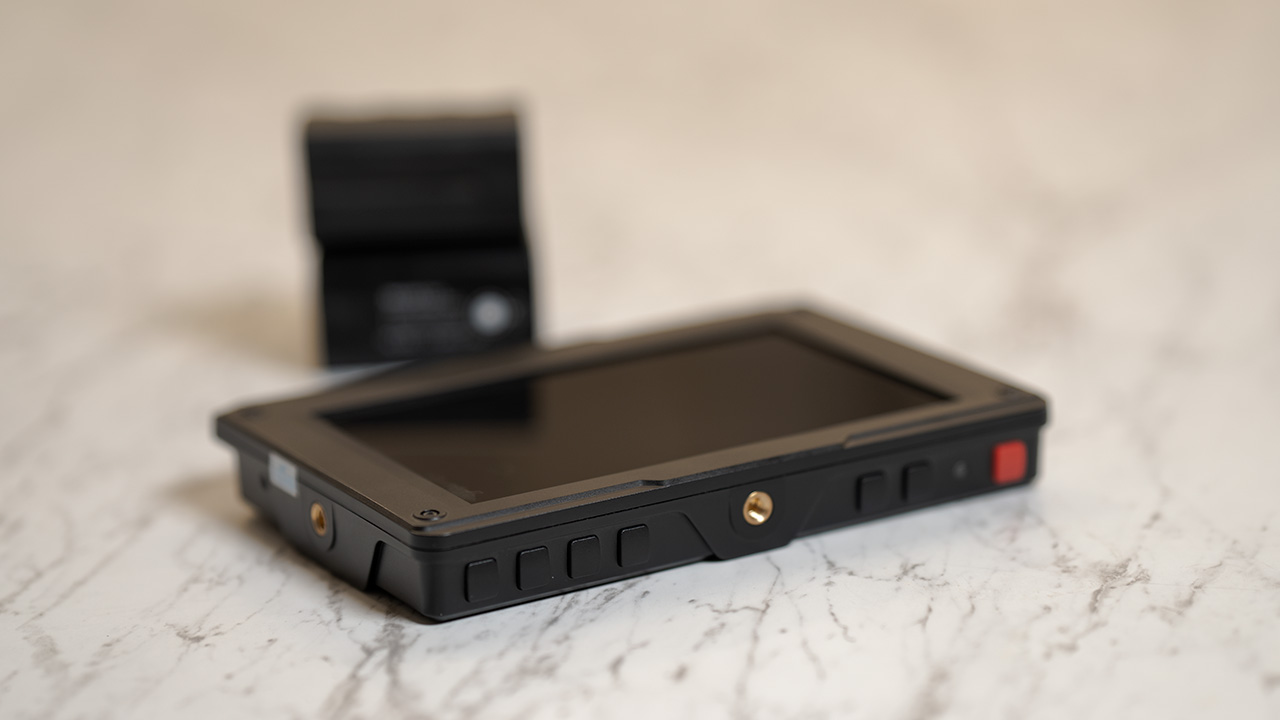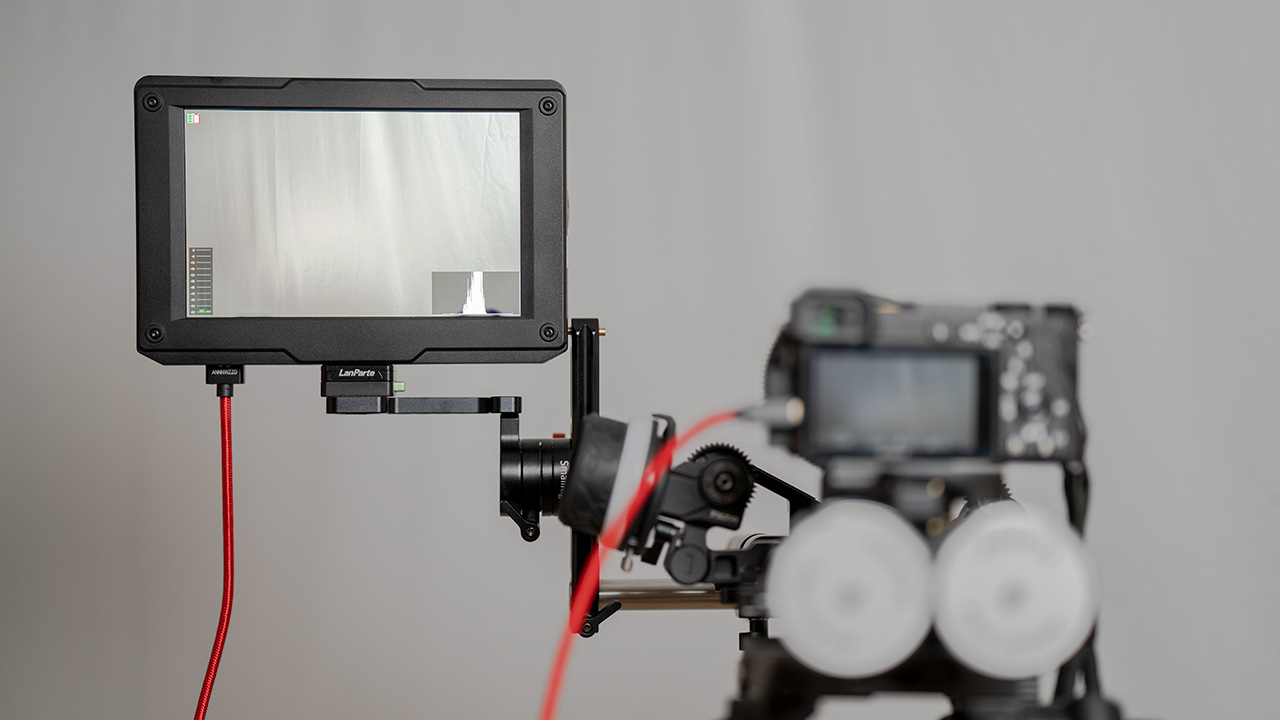A few weeks ago, we received a review sample of the new pnbe 1080p high brightness HDR 7” HDMI field monitor. In this video, we are going to take a look at what comes in the box, the design, and the build of this monitor as well as the operation and performance before we give you our final verdict.
Who are pnbe?
If you never heard the name pnbe before, we can’t blame you. They are not a company but an association of broadcasters and cinematographers based out of Spain and Italy. Unlike more or less any other gear manufacturer around, they are not in it for the money as they are a non-profit organization, their only goal is to make affordable products for the filming community which is not only unique but downright commendable.
The monitor that we are testing is part of a series of 4 high brightness monitors that pnbe is selling which includes a 5” version a 6” version and two 7” versions, one with SDI and HDMI connections and one with only HDMI which is what we have been testing.
In the box you get a nice carrying case, inside you can find HDMI cables, an Alan key and a metal tilting cold shoe mount, and a special tally cable. There is also a pretty extensive manual and of course the monitor itself.
Top physical buttons (the text is only in the back)
The pnbe 7” monitor design and build
The monitor is made of hard plastic and it feels pretty robust and not very light in the hand (although the actual weight is 360 g / 12.7 oz.). The buttons are a tad plasticky though and on our pre-production unit, they made an audible clicking noise. One advantage of a plastic build is that the monitor doesn’t get too hot, unlike a metal monitor which can get quite warm to the touch (our Portkeys BM5 II monitor can be very hard to touch after an hour of operation).
The monitor has ¼” 20 screws on all sides which is a nice touch, it would be great if it had Arri locating pinholes as well to prevent rotating like some of our other monitors do. Connecting an arm to the monitor also made us realize that on our unit the ¼” 20 threads are a bit too short which is kind of strange.
On the back of the screen, you have dual L mount battery plates that you can mount horizontally which is an interesting design (we are not sure if it actually has any advantage though). The battery locks are really nice unlike most other monitors we have which are too easy or too hard to unlock for some reason. You can also hot-swap the batteries as you only need one at any given time to power the monitor which can be useful for long shoots.
On the top, there are 7 buttons. A red button for turning the screen on and off (we prefer a switch actually), and 6 other buttons including two users programable F1/F2 buttons. We would really like to see at least 4 programable buttons with an easier way to program them with more options (more on software later) but it still better than some manufacturers who rely only on touch.
What we found strange is that the markings for the buttons are on the back and it can take some getting used to. Marking on the top or even having an on-display markings option could have been very useful.
In terms of connections, our model has HDMI in and out, USB-A for firmware updates and LUTs on the lower part, and headphones and Tally (one on each side). We would really like to see a monitor that knows when the camera is recording and has a tally light built-in on top so both the photographer and the talent can know when rolling starts and stops, but for cameras, with only HDMI this might not be possible (if you have thoughts on that let us know in the comments).
When it comes to power, aside from the L mount batteries we mentioned, you can use the DC 7-24V connector to power the monitor and we used our Power-Pipe – 12V – USB-C PD to power the monitor and it seemed to work well, but we did notice some strange glitches with menus so we are trying to figure this one out (could be the power-pipe or our pre-production monitor we are not sure).
It would be nice if it had its own USB-C power option like our Feelworld F5 PRO but we have yet to test a 7” monitor with this function. We also noticed that there is no indicator light to know when the monitor gets power like the Feelworld so you will need to turn it on to see if the battery is working.
Dual L mount batteries (horizontal setup) that are hot swappable
Operation and software
While the hardware feels, for the most part, pretty solid the operation and software seem a little outdated. This monitor has no touch features and the menus are not the most intuitive, plus you only have two programable buttons which means that you don’t have a lot of options to avoid the menus while operating the screen.
It seems to have most of the common assist tools including:
- Focus Peaking (color, level)
- False Color
- Histogram
- Zebras
- Check Field
- Aspect Ratio
- Image Zoom (up to 8X).
- Audio Meters
- Image Flip
- H/V Delay
- Frame Markers
- Freeze Frame
The only major thing missing seems to be waveform.
Testing of the pnbe monitor
Most of our testing is based on comparisons we have done to some of the other monitors we have.
Viewing angles looks on par with some of the other monitors we have including the BM5, having higher brightness seems to help in this respect.
The colors seem a little less saturated than our BM5 monitor but more accurate. Sharpness seems very similar (both are 1080p monitors although the pnbe is bigger). We also compared the brightness of the screen to the BM5 and although this isn’t scientific it looks like it is about as bright with the backlight turned on in the menu.
Working with the monitor
We have been working with the pnbe monitor alongside some of our other monitors in the studio for a while now and for the most part, it has been working fine as we are coming into winter and working mostly in the studio we didn’t have a chance to try it in bright sunlight but compared to our tried and true high brightness BM5 monitor it looked very similar.
We reported a few minor bugs to pnbe who have been very attentive and there is a good chance that those will be fixed in a future firmware update or have already been sorted out in the production units (ours was a pre-production model).
Conclusion
The pnbe 7” monitor is an interesting offer. It is fairly well built with decent colors, good viewing angles, and very good brightness, contrast, and sharpness. The dual L mount batteries are also very useful if you want to power the monitor for a long time (and hot-swapping is even more useful).
High brightness, high color accuracy, and viewing angles
Besides not having a touch screen the biggest drawback at this point seems to be the interface and the lack of more user-programmable buttons. If you can get around these and you want a good quality high brightness 7” monitor, the pnbe one should be on your list especially when you consider the value and we would certainly like to see more products coming out of the group in the future.
Pricing for the pnbe monitor
Talking about value, the 7” HDMI version that we have tested sells for just under $200 which is extremely competitive pricing for this type of monitor.
You can check out more LensVid exclusive articles and reviews on the following link.

You can support LensVid by shopping with our affiliate partners
Affiliates: Amazon, B&H, Adorama and E-bay.
Why should you trust us?

